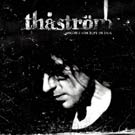 |
THÅSTRÖM
MANNEN SOM BLEV EN GRIS
ALBUM MNW RELEASE: APRIL 23,
2002 REVIEW: JUNE 4, 2002
 |
There
are at least two generations of Swedish punk rockers hitting the charts
right now, some of them in Sweden, a few abroad. Backyard Babies, Hellacopters
and more recently The Hives belong to the younger breed, re-enacting the
rock myth and posing for their dollars worth.
They are all indebted, in one way or another, to the almost mythic stage
persona of Joakim Thåström from the first generation. The sound
and the fury of his first and Sweden’s foremost punk band Ebba Grön
have never been forgotten, although Thåström has at times been
keen to leave his past behind and get rid of his celebrity status.
It is easy to see the differences between these generations now. While
the youngsters are in their first phase of uncontrolled, explosive behaviour,
Thåström has already been through that - as well as his ballad
period and his experimental dabbling with the industrial band Peace, Love
and Pitbulls. Recently he has finally returned home to the Swedish language,
proper rock music and the contemplative mind of the ageing musician.
Yeah, that’s right. Although Chips Kiesbye from Sator at times helps
Thåström to create mighty walls of noise, the calmer parts
of ”Mannen som blev en gris” take precedence on the album. ”Kaospassageraren”
and ”Släpp aldrig in dom” sound like they were written
on bad days on paper napkins in one of the third rate Chinese restaurants
Thåström likes to frequent to be left alone by fans. A slow
tempo and the use of a church organ underlines the confusion of the lyrics:
Whatever happened? How did I get like this?
As on his previous album, Thåström sometimes competes for the
position as Sweden's greatest gothic musician. The intro to ”Hål”
would have no problem fitting onto any Tiamat album, and the mood of the
songs is definitely of the darker variety, unless you consider Thåström's
rants of moving to Warzaw and reading the bible for his kids in ”Höghus-sång”
as sensible and optimistic.
MATTIAS
HUSS
|
|